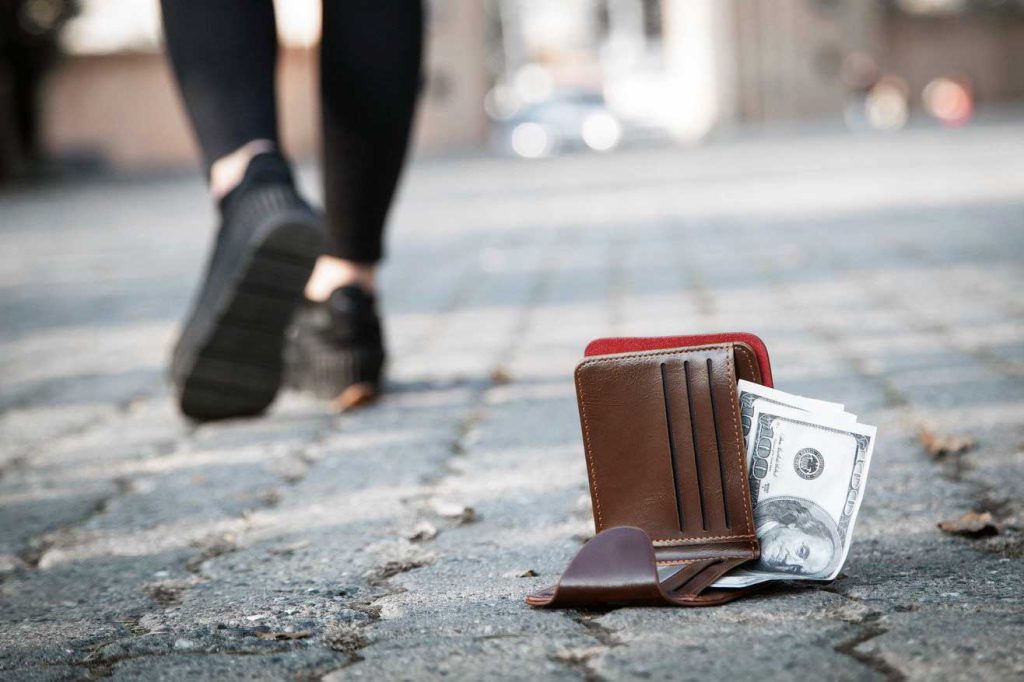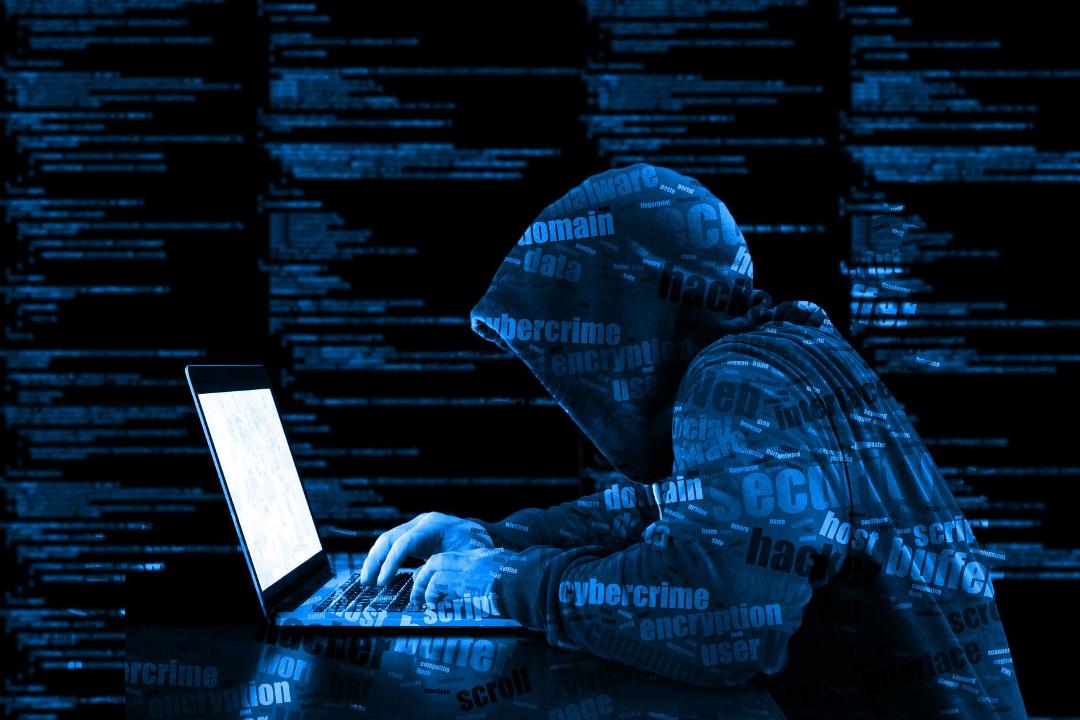Losing your wallet can feel like a nightmare. Beyond the hassle of replacing cards and IDs, there’s the serious risk of fraud and identity theft. The faster you act, the more control you keep over your money and personal information.

This guide walks you through every step to take immediately after your wallet is lost or stolen. You’ll learn who to contact first, how to secure your accounts, and what to do to prevent future problems.
Step 1: Lock or Cancel Your Credit and Debit Cards Immediately
If your wallet goes missing, treat it as an emergency. Anyone who finds it could try to use your cards, so the faster you act, the better your chance of preventing unauthorized charges.
Every major bank and credit card issuer lets you lock or cancel a card instantly through its mobile app or website. You can also call the number below to report your card lost or stolen and request a replacement.
Card issuer phone numbers:
- American Express: 1-800-528-2122
- Bank of America: 1-800-432-1000
- Capital One: 1-800-227-4825
- Chase: 1-800-935-9935
- Citibank: 1-800-950-5114
- Wells Fargo: 1-800-869-3557
Most banks and credit card companies replace lost or stolen cards at no cost, and many can ship a new one overnight. Some even issue a temporary digital card you can add to your mobile wallet and start using right away.
Locking your card prevents new purchases, but automatic payments—like subscriptions or recurring bills—may still go through. Once you’ve secured your accounts, confirm that all transactions look legitimate and update your payment details once your new cards arrive.
Step 2: Report the Loss to Your Bank or Credit Union
Once you’ve locked your cards, the next step is to notify your bank or credit union directly. Reporting the loss creates an official record that helps protect you from fraud and ensures you’re covered under federal consumer protection laws.
Under Regulation E, debit card users are generally not responsible for unauthorized charges if the loss is reported within two business days.
For credit cards, the Fair Credit Billing Act limits your liability to $50, and many issuers waive that amount entirely. Acting fast is the key—delaying could increase your liability or complicate your bank’s investigation.
When you contact your bank or credit union:
- Explain what happened: State whether your wallet was lost or stolen.
- Ask for written confirmation: Request a reference number or confirmation email for your report.
- Review your accounts: Go over recent transactions with the representative to make sure there are no fraudulent charges.
- Confirm your replacement timeline: Ask when to expect new cards and whether digital replacements are available.
Keep a written record of your call, including the date, time, and the name of the representative. This documentation will help if you need to dispute charges later.
Step 3: Set Up Fraud Alerts and Freeze Your Credit
Even if your bank accounts are secured, your personal information—like your driver’s license or Social Security number—could still be at risk. Setting up a fraud alert or a credit freeze helps stop thieves from opening new accounts in your name.
A fraud alert places a flag on your credit file, requiring lenders to verify your identity before granting new credit. A credit freeze takes it a step further by blocking all access to your credit file until you lift the freeze yourself.
| Option | What It Does | How Long It Lasts | Cost | Best For |
|---|---|---|---|---|
| Fraud Alert | Warns lenders to verify your identity before opening new accounts | 1 year (renewable) | Free | Moderate risk |
| Credit Freeze | Blocks all new credit inquiries until you lift the freeze | Until lifted | Free | High risk or confirmed theft |
You only need to contact one of the three major credit bureaus to set up a fraud alert—they’re required to notify the other two. For a credit freeze, you must reach out to each bureau individually.
Credit bureau contact numbers:
- Equifax: 888-766-0008
- Experian: 888-397-3742
- TransUnion: 800-680-7289
After setting up your alert or freeze, monitor your credit reports regularly. Look for new accounts, hard inquiries, or address changes you don’t recognize.
Step 4: File a Police Report
If you believe your wallet was stolen rather than lost, file a police report as soon as possible. A report provides official documentation that can help you prove identity theft, recover lost items, or support any insurance or credit disputes.
When filing the report, include as many details as possible:
- List of missing items: Cards, ID, cash, and anything else that was in your wallet.
- Date, time, and location: Where and when you think the loss or theft occurred.
- Estimated value: Include any cash or valuables that were lost.
Ask for a copy of the report or the report number. You may need it to resolve fraudulent transactions or verify your identity when replacing your driver’s license or other government-issued IDs.
Keep this report with your documentation from the bank—it can serve as an additional layer of protection if you need to dispute future fraudulent activity.
Step 5: Replace Your Driver’s License and Identification
Your driver’s license or state ID is one of the most sensitive items in your wallet. It contains personal information that can be used for identity theft or fraudulent activity. Replacing it quickly helps protect your identity and keeps you legally compliant if you need to drive.
Contact your local Department of Motor Vehicles (DMV) or equivalent state agency as soon as possible. Most states allow you to report a lost or stolen license online, by mail, or in person. Check whether you need to bring alternative proof of identity—such as a passport, birth certificate, or Social Security card—when applying for a replacement.
If your state issues REAL ID–compliant licenses, you may need to present additional documents like proof of residence or lawful status. Each state has its own rules, so review the requirements before your visit to save time.
Once your new license arrives, keep a record of the replacement date and securely dispose of any paperwork containing personal details. This reduces the risk of future misuse if your original license is ever found or stolen.
Step 6: Replace Insurance Cards and Membership IDs
Your wallet likely contained more than just credit and debit cards. Health insurance, auto insurance, and membership cards can also expose personal details if they fall into the wrong hands. Even something as simple as your policy number can be used for identity theft or fraudulent medical claims.
Contact each insurance provider and membership organization to request replacement cards and mark your old ones as lost. Most companies will issue replacements quickly—many even allow you to download digital versions through their mobile apps or member portals.
Once you receive your new cards, shred any remaining paperwork or outdated cards to avoid future security risks.
Step 7: Update Auto-Pay and Digital Wallets
If your lost wallet contained debit or credit cards linked to recurring payments, those payments will fail once the cards are canceled. To avoid missed bills or service interruptions, update your payment details as soon as your new cards arrive.
Start by checking your regular monthly expenses and digital payment tools.
Be sure to update:
- Streaming services: Netflix, Hulu, or Spotify subscriptions.
- Utilities: Electric, gas, water, and internet providers.
- Mobile payments: Apple Pay, Google Pay, and PayPal accounts.
- Retail and delivery apps: Amazon, DoorDash, or grocery apps.
Taking a few minutes to review these payments ensures your bills stay current and helps prevent overdrafts or late fees.
Step 8: Monitor Your Accounts and Credit Reports
Once your accounts are secure, stay alert for suspicious activity. Fraudulent charges often appear in small amounts before larger ones follow, so reviewing your accounts daily is essential for the next several weeks.
Check your checking, savings, and credit card activity through your bank’s app or online dashboard. Immediately report anything you don’t recognize to your bank’s fraud department.
You can also access a free copy of your credit report each week from all three major credit bureaus. Reviewing these reports helps you spot unauthorized credit inquiries or new accounts opened in your name.
For extra protection, consider enrolling in a credit monitoring service. These services alert you to new activity on your credit file, helping you catch identity theft early before it becomes a bigger problem.
Step 9: Replace Other Essentials
Beyond cards and IDs, your wallet may have included smaller items that are easy to overlook but still important to replace.
Common items to check for:
- Transit passes: Contact your city’s transportation department to replace your pass or reload balance onto a new card.
- Gift cards or prepaid debit cards: Some issuers can reissue unused balances if you have proof of purchase.
- Work badges or access cards: Notify your employer or building security immediately to deactivate lost credentials.
- Loyalty or reward cards: Reach out to retailers or restaurants to recover your points or link them to your new account.
Taking the time to replace these items helps restore your daily routines and reduces the chance of unauthorized use.
Step 10: Take Preventive Steps for the Future
Once everything is replaced and your accounts are secure, set up safeguards to make sure a lost wallet never causes this much stress again.
Simple habits can make a big difference:
- Use a digital wallet: Mobile payments are encrypted and harder for thieves to misuse.
- Keep a secure backup: Store copies of important card numbers and customer service contacts in a locked file or password manager.
- Add identity protection: Credit monitoring or identity theft protection plans can alert you to suspicious activity early.
- Turn on two-factor authentication: Add an extra layer of security to your financial apps and online accounts.
These steps protect you from future loss and give you peace of mind knowing your financial information is better secured.
Final Thoughts
Losing your wallet can be unsettling, but staying calm and acting quickly keeps the situation manageable. Each step you take, such as locking your cards, notifying your bank, replacing identification, and checking your credit, helps protect you from fraud and restores a sense of control.
Once everything is secure, take a few simple precautions for the future. Keep emergency contact numbers in a safe place, store digital copies of important documents, and consider using mobile payments for added security. A clear plan and a calm response can turn a stressful moment into a minor inconvenience.




